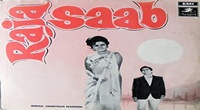
Water is a transparent, tasteless, odorless, and nearly colorless chemical substance that is the main constituent of Earth's streams, lakes, and oceans, and the fluids of most living organisms. Its chemical formula is H2O, meaning that each of its molecules contains one oxygen and two hydrogen atoms that are connected by covalent bonds. Strictly speaking, water refers to the liquid state of a substance that prevails at standard ambient temperature and pressure; but it often refers also to its solid state (ice) or its gaseous state (steam or water vapor). It also occurs in nature as snow, glaciers, ice packs and icebergs, clouds, fog, dew, aquifers, and atmospheric humidity.
Water covers 71% of the Earth's surface. It is vital for all known forms of life. On Earth, 96.5% of the planet's crust water is found in seas and oceans, 1.7% in groundwater, 1.7% in glaciers and the ice caps of Antarctica and Greenland, a small fraction in other large water bodies, and 0.001% in the air as vapor, clouds (formed of ice and liquid water suspended in air), and precipitation. Only 2.5% of this water is freshwater, and 98.8% of that water is in ice (excepting ice in clouds) and groundwater. Less than 0.3% of all freshwater is in rivers, lakes, and the atmosphere, and an even smaller amount of the Earth's freshwater (0.003%) is contained within biological bodies and manufactured products. A greater quantity of water is found in the earth's interior.
Water on Earth moves continually through the water cycle of evaporation and transpiration (evapotranspiration), condensation, precipitation, and runoff, usually reaching the sea. Evaporation and transpiration contribute to the precipitation over land. Large amounts of water are also chemically combined or adsorbed in hydrated minerals.
Safe drinking water is essential to humans and other lifeforms even though it provides no calories or organic nutrients. Access to safe drinking water has improved over the last decades in almost every part of the world, but approximately one billion people still lack access to safe water and over 2.5 billion lack access to adequate sanitation. However, some observers have estimated that by 2025 more than half of the world population will be facing water-based vulnerability. A report, issued in November 2009, suggests that by 2030, in some developing regions of the world, water demand will exceed supply by 50%.
Water plays an important role in the world economy. Approximately 70% of the freshwater used by humans goes to agriculture. Fishing in salt and fresh water bodies is a major source of food for many parts of the world. Much of long-distance trade of commodities (such as oil and natural gas) and manufactured products is transported by boats through seas, rivers, lakes, and canals. Large quantities of water, ice, and steam are used for cooling and heating, in industry and homes. Water is an excellent solvent for a wide variety of chemical substances; as such it is widely used in industrial processes, and in cooking and washing. Water is also central to many sports and other forms of entertainment, such as swimming, pleasure boating, boat racing, surfing, sport fishing, and diving.
Contents
Etymology
The word "water" comes from Old English "wæter", from Proto-Germanic "*watar" (source also of Old Saxon "watar", Old Frisian "wetir", Dutch "water", Old High German "wazzar", German "Wasser", Old Norse "vatn", Gothic "wato"), from Proto-Indoeuropean "*wod-or", suffixed form of root "*wed-" ("water"; "wet").
Chemical and physical properties
Water (H
2O) is a polar inorganic compound that is at room temperature a tasteless and odorless liquid, nearly colorless with a hint of blue. This simplest hydrogen chalcogenide is by far the most studied chemical compound and is described as the "universal solvent" for its ability to dissolve many substances. This allows it to be the "solvent of life". It is the only common substance to exist as a solid, liquid, and gas in normal terrestrial conditions.
States
This section needs additional citations for verification. (May 2018) (Learn how and when to remove this template message) |
Water is a liquid at the temperatures and pressures that are most adequate for life. Specifically, at a standard pressure of 1 atm, water is a liquid between 0 and 100 °C (32 and 212 °F). Increasing the pressure slightly lowers the melting point, which is about ?5 °C (23 °F) at 600 atm and ?22 °C (?8 °F) at 2100 atm. This effect is relevant, for example, to ice skating, to the buried lakes of Antarctica, and to the movement of glaciers. (At pressures higher than 2100 atm the melting point rapidly increases again, and ice takes several exotic forms that do not exist at lower pressures.)
Increasing the pressure has a more dramatic effect on the boiling point, that is about 374 °C (705 °F) at 220 atm. This effect is important in, among other things, deep-sea hydrothermal vents and geysers, pressure cooking, and steam engine design. At the top of Mount Everest, where the atmospheric pressure is about 0.34 atm, water boils at 68 °C (154 °F).
At very low pressures (below about 0.006 atm), water cannot exist in the liquid state and passes directly from solid to gas by sublimation—a phenomenon exploited in the freeze drying of food. At very high pressures (above 221 atm), the liquid and gas states are no longer distinguishable, a state called supercritical steam.
Water also differs from most liquids in that it becomes less dense as it freezes. The maximum density of water in its liquid form (at 1 atm) is 1,000 kg/m3 (62.43 lb/cu ft); that occurs at 3.98 °C (39.16 °F). The density of ice is 917 kg/m3 (57.25 lb/cu ft). Thus, water expands 9% in volume as it freezes, which accounts for the fact that ice floats on liquid water.
The details of the exact chemical nature of liquid water are not well understood; some theories suggest that water's unusual behaviour is as a result of it having 2 liquid states.
Taste and odor
Pure water is usually described as tasteless and odorless, although humans have specific sensors that can feel the presence of water in their mouths, and frogs are known to be able to smell it. However, water from ordinary sources (including bottled mineral water) usually has many dissolved substances, that may give it varying tastes and odors. Humans and other animals have developed senses that enable them to evaluate the potability of water by avoiding water that is too salty or putrid.
Color and appearance
The apparent color of natural bodies of water (and swimming pools) is often determined more by dissolved and suspended solids, or by reflection of the sky, than by water itself.
Light in the visible electromagnetic spectrum can traverse a couple meters of pure water (or ice) without significant absorption, so that it looks transparent and colorless. Thus aquatic plants, algae, and other photosynthetic organisms can live in water up to hundreds of meters deep, because sunlight can reach them. Water vapour is essentially invisible as a gas.
Through a thickness of 10 meters (33 ft) or more, however, the intrinsic color of water (or ice) is visibly turquoise (greenish blue), as its absorption spectrum has a sharp minimum at the corresponding color of light (1/227 m?1 at 418 nm). The color becomes increasingly stronger and darker with increasing thickness. (Practically no sunlight reaches the parts of the oceans below 1,000 meters (3,300 ft) of depth.) Infrared and ultraviolet light, on the other hand, is strongly absorbed by water.
The refraction index of liquid water (1.333 at 20 °C (68 °F)) is much higher than that of air (1.0), similar to those of alkanes and ethanol, but lower than those of glycerol (1.473), benzene (1.501), carbon disulfide (1.627), and common types of glass (1.4 to 1.6). The refraction index of ice (1.31) is lower than that of liquid water.
Polarity and hydrogen bonding
Since the water molecule is not linear and the oxygen atom has a higher electronegativity than hydrogen atoms, it is a polar molecule, with an electrical dipole moment: the oxygen atom carries a slight negative charge, whereas the hydrogen atoms are slightly positive. Water is a good polar solvent, that dissolves many salts and hydrophilic organic molecules such as sugars and simple alcohols such as ethanol. Most acids dissolve in water to yield the corresponding anions. Many substances in living organisms, such as proteins, DNA and polysaccharides, are dissolved in water. Water also dissolves many gases, such as oxygen and carbon dioxide—the latter giving the fizz of carbonated beverages, sparkling wines and beers.
On the other hand, many organic substances (such as fats and oils and alkanes) are hydrophobic, that is, insoluble in water. Many inorganic substances are insoluble too, including most metal oxides, sulfides, and silicates.
Because of its polarity, a molecule of water in the liquid or solid state can form up to four hydrogen bonds with neighboring molecules. These bonds are the cause of water's high surface tension and capillary forces. The capillary action refers to the tendency of water to move up a narrow tube against the force of gravity. This property is relied upon by all vascular plants, such as trees.
The hydrogen bonds are also the reason why the melting and boiling points of water are much higher than those of other analogous compounds like hydrogen sulfide (H
2S). They also explain its exceptionally high specific heat capacity (about 4.2 J/g/K), heat of fusion (about 333 J/g), heat of vaporization (2257 J/g), and thermal conductivity (between 0.561 and 0.679 W/m/K). These properties make water more effective at moderating Earth's climate, by storing heat and transporting it between the oceans and the atmosphere. The hydrogen bonds of water are of moderate strength, around 23 kJ/mol (compared to a covalent O-H bond at 492 kJ/mol). Of this, it is estimated that 90% of the hydrogen bond is attributable to electrostatics, while the remaining 10% reflects partial covalent character.
Electrical conductivity and electrolysis
Pure water has a low electrical conductivity, which increases
Watch movie Water online on Amazon
Watch movie Water online
Watch The Movie On PrimeSohni Mahiwal (1984) Full HD Movie Download
.jpg)
Dil Aur Mohabbat Full HD Movie Download

Char Darvesh Full HD Movie Download

Raavan (2010) Full HD Movie Download
.jpg)
Raja Saab Full HD Movie Download

Narsimha Full HD Movie Download

Shaadi Ke Baad Full HD Movie Download

Kshtriya - The Warrior Full HD Movie Download

Kartavya (1979) Full HD Movie Download
.jpg)
Bidaai Full HD Movie Download

Nyayam Meere Cheppali Full HD Movie Download

Meri Adalat Full HD Movie Download

Aatma Gowaravam Full HD Movie Download

Mugguru Ammayila Mogudu Full HD Movie Download

He is Just Not That Into You Full HD Movie Download

Seven Full HD Movie Download

Krishna Sudama Full HD Movie Download

Alapirandhavan Full HD Movie Download

Anand Full HD Movie Download

Sabhash Ramudu Full HD Movie Download

Tarzan Veerudu Full HD Movie Download

Download latest Movie from bollywood
- 1> baaghi 3
- 2> THE SKY IS PINK MOVIE FULL STORY AND REVIEW
- 3> Luka Chuppi
- 4> TO ALL THE BOYS I’VE LOVED BEFORE
- 5> Kabir Singh
- 6> Street Dancer 3D
- 7> Simmba
- 8> Gone Girl
- 9> The Girl Who Lived
- 10> Ludo
- 11> DILWALE DULHANIA LE JAYENGE
- 12> GUILTY
- 13> The Godfather
- 14> Adventures of Rusty
- 15> Sooryavanshi
- 16> Satyameva Jayate 2
- 17> Thappad
- 18> Bhool Bhulaiyaa 2
- 19> KGFChapter 2
- 20> Mardaani 2
- 21> Pinjar
- 22> Shivaji maharaj
- 23> Ek Villian 2
- 24> Hungama 2
- 25> Divergent
- 26> Mumbai Saga
- 27> The Internship
- 28> HIT (telugu)
- 29> Panga
- 30> The perfect date
- 31> 16 December
- 32> Gopala Gopala (Telugu)
- 33> Brahmastra
- 34> Gangubai Kathiawadi
- 35> Manmadhudu
- 36> Nenu local
- 37> Mahanati
- 38> Shatamanam bavathi
- 39> Lagaan
- 40> After
- 41> MOM
- 42> Shamshera
- 43> Raguvaran BTech
- 44> Khakee
- 45> The villain
- 46> OM
- 47> Mr. perfect
- 48> Bueatifull mind
- 49> Hichki
- 50> Gabbar Singh
- 51> Jogi
- 52> Before Sunrise
- 53> Before Sunset
- 54> Before Midnight
- 55> The Big Bull
- 56> Top Gun: Maverick
- 57> The Purge
- 58> The Sky is Pink
- 59> Laxmmi Bomb
- 60> Sadak 2
- 61> Sufna
- 62> Prithviraj
- 63> PK
- 64> Coolie No 1(2020)
- 65> Black Widow
- 66> Dear Zindagi
- 67> Dil Bechara
- 68> PHIR HERA PHERI
- 69> WAR
- 70> Dostana
- 71> RRR: Roudram Ranam Rudhiram
- 72> Maidan
- 73> Dabbang 3
- 74> Chhalaang
- 75> life as we know it
- 76> SherShaah
- 77> Sandeep Aur Pinky Faraar
- 78> Event Horizon
- 79> 83
- 80> Radhe: Your Most Wanted Bhai
- 81> Gunjan Saxena: The Kargil Girl
- 82> Mr India
- 83> Vivah
- 84> Anokha Bandhan
- 85> Ghost
- 86> Bhoot: Part One - The Haunted Ship
- 87> Haseen Dilruba
- 88> Laal Singh Chaddha
- 89> Qismat
- 90> Rajput
- 91> Drive
- 92> Dil Chahta Hai
- 93> Dil Ki Baazi
- 94> Dil Ka Rishta
- 95> Teesri Manzil
- 96> Dil
- 97> Love Aaj Kal
- 98> Khaali Peeli
- 99> Bunty Aur Babli 2
- 100> Atrangi Re
- 101> Gulabo Sitabo
- 102> Jodi
- 103> Suraj Pe Mangal Bhari
- 104> Deewana
- 105> Attack
- 106> Sardar Udham Singh
- 107> Toofan
- 108> THE LOVEBIRDS
- 109> Jersey
- 110> Ginny Weds Sunny
- 111> Thalaivi
- 112> Shiddat
- 113> Angels vs Zombies
- 114> Koi Mil Gya
- 115> Thank God
- 116> Bhuj: The Pride of India
- 117> Hum Aapke Hain Kaun
- 118> The Platform
- 119> Bird Box
- 120> Roohi Afzana
- 121> Torbaaz
- 122> Nikamma
- 123> World War Z
- 124> Extraction
- 125> Train to Busan
- 126> Life of Pi
- 127> SHAADI MEIN JROOR AANA
- 128> Himmat Aur Mehnat
- 129> To All The Boys: P.S. I Still Love You
- 130> Mimi
- 131> Good Newwz
- 132> Shubh Mangal Zyada Saavdhan
- 133> Raabta
- 134> Harry Potter and the Philosopher's Stone
- 135> Harry Potter and the Chamber of Secrets
- 136> Chhapaak
- 137> War of the Worlds
- 138> Harry Potter and the Prisoner of Azkaban
- 139> Harry Potter and the Goblet of Fire
- 140> MURDER MYSTERY
- 141> Shakuntala Devi
- 142> Bachchan Pandey
- 143> Jayeshbhai Jordar
- 144> Sheer Qorma
- 145> Saina
- 146> 'O' Pushpa I hate tears
- 147> Kedarnath
- 148> MS Dhoni The Untold Story
- 149> Chhichhore
- 150> Badhaai Ho
- 151> Unstoppable
- 152> Oz the Great And Powerful
- 153> The Girl on the Train
- 154> Haathi Mere Saathi 2020
- 155> The Conjuring: The Devil Made Me Do It
- 156> Gandhi Se Pehle Gandhi
- 157> The Song of Scorpions
- 158> Srimanthudu
- 159> Hello Guru Prema Kosame
- 160> Beauty and The Beast
- 161> Black Panther
- 162> Charlie and the Chocolate Factory
- 163> Bole Chudiyan
- 164> Fidaa
- 165> Duvvada Jagannadham
- 166> Bruce Lee: The Fighter
- 167> Hyper
- 168> Yaara
- 169> Red (2020)
- 170> Shivam
- 171> That Is Mahalakshmi
- 172> Nishabdham
- 173> Aashram 2020 web series
- 174> Laxmii
- 175> Mismatched
- 176> STUDENT OF THE YEAR 2
- 177> NAIL POLISH
- 178> Ramprasad Ki Tehrvi
- 179> KAAGAZ
- 180> 12 o Clock
- 181> The Power
- 182> bolo hau
- 183> Tribhanga
- 184> JAMUN
- 185> Madam Chief Minister
- 186> Maasaab
- 187> Aadhaar
- 188> Tanhaji
- 189> Bhaagi 3
- 190> Bhootnath
- 191> MALANG
- 192> Jai Mummy Di
- 193> Haathi Mere Saathi 2021
- 194> Shakeela
- 195> Unpaused
- 196> Annayya
- 197> Vamsoddharakudu
- 198> Mrugaraju
- 199> Narasimha Naidu
- 200> Sankranti
- 201> Manasu Maata Vinadhu
- 202> Anjaane
- 203> Apaharan
- 204> Bachke Rehna Re Baba
- 205> Bewafaa
- 206> Roohi
- 207> Radhe
- 208> Zindagi Khoobsoorat Hai
- 209> Yeh Mohabbat Hai
- 210> Yeh Kya Ho Raha Hai?
- 211> The Tomorrow War
- 212> DehradunDiary
- 213> Meri Shaadi Karaoo
- 214> Matruu Ki Bijlee Ka Mandola
- 215> No One Killed Jesica
- 216> Aag Ka Goola
- 217> Eight Million Dollars
- 218> Three Hundred
- 219> Cats and Dog
- 220> Decoy
- 221> Gold Rush
- 222> You Have Got Mail
- 223> Final Destination three
- 224> Tofan
- 225> Jungle
